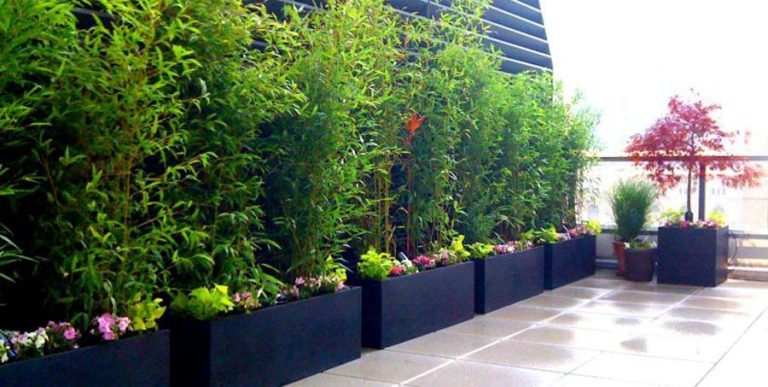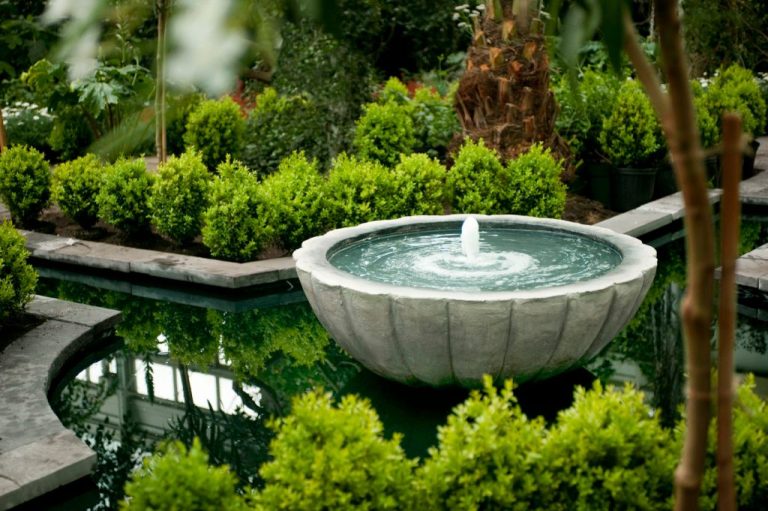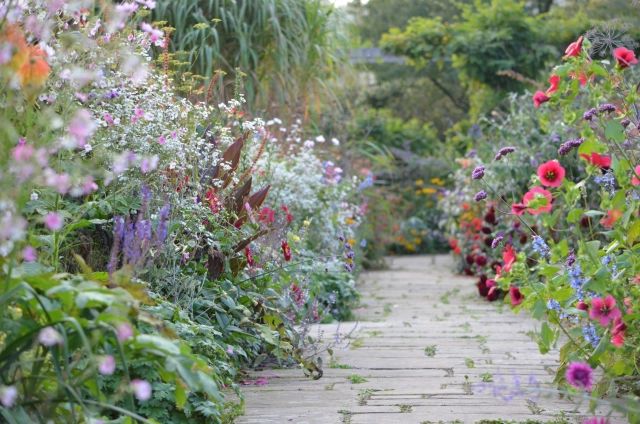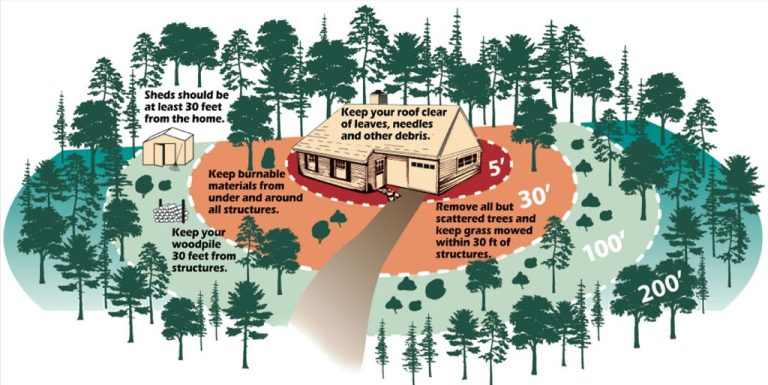Mediterranean Garden Design With Citrus Trees: Bringing The Mediterranean Sun To Your Backyard
Mediterranean garden design brings the charm and ambiance of Southern Europe to backyards, patios, and gardens. This sun-filled style emphasizes drought-tolerant plants, aromatic herbs, bright flowers, rustic elements, and of course, citrus trees. The inclusion of fruit-bearing trees like lemon, lime, orange, grapefruit, and more is a hallmark of the Mediterranean aesthetic.
Citrus trees thrive in warm, dry climates similar to the Mediterranean region. With their shiny leaves, fragrant blossoms, and brightly-colored fruit, citrus trees add a punch of color and provide a focal point. Beyond aesthetics, citrus trees offer the added benefit of homegrown fruit. Well-suited to container growing, they can flourish on patios and in small spaces.
This guide will cover how to incorporate citrus trees into a stunning Mediterranean garden design. We’ll explore optimal placement, compatible plants, hardscaping features, and more. With thoughtful planning, you can create a Mediterranean oasis in your own backyard.
Source: https://www.bhg.com/mediterranean-garden-style-7558206
Climate Considerations
Mediterranean climates are characterized by mild, wet winters and hot, dry summers (Wikipedia). This climate exists in locations around the Mediterranean Sea as well as other parts of the world with similar weather patterns. The Mediterranean biome receives most of its average rainfall during the winter months. Summers tend to be hot and very dry.
The amount of rainfall in Mediterranean climates ranges from around 10-40 inches per year, with most rain falling during the colder winter months (Britannica). During the summer, high pressure systems and subsiding air masses promote warm, sunny skies. The average summer temperature is typically around 68-77°F. Winters are mild and wet, with average temperatures around 40-55°F.
Sunlight is plentiful year-round, although winter days are shorter. The high amount of sunlight combined with mild temperatures and some winter rainfall creates excellent growing conditions for many plants. When designing a Mediterranean garden, it’s important to choose plants adapted to both wet winters and hot, dry summers.
Soil Needs
Citrus trees thrive in well-drained soil with a pH between 6.0 and 7.5, making it neutral to slightly alkaline (Yarden). They perform poorly in dense clay or soil that doesn’t drain well. Aim for loose, sandy loam soil that retains some moisture but allows excess water to drain away. Adding organic matter like compost will help improve water retention and drainage. For potted citrus trees, use a quality potting mix blended for citrus with compost, perlite or vermiculite, and a handful of slow-release fertilizer pellets mixed in (Growing in the Garden). This will provide ideal aeration and moisture control.
Popular Citrus Varieties
When designing a Mediterranean garden with citrus trees, some of the most popular varieties to consider are lemons, oranges, and grapefruit. Each offers unique characteristics and flavors that can enhance your backyard oasis.
Lemons are one of the most versatile citrus fruits, with uses ranging from cooking to cleaning. The two main types are Eureka and Lisbon. Eureka lemons have a textured, aromatic peel and tart juicy flesh. Lisbon lemons are ripe year-round, with smooth thin skin and highly acidic juice.[1]
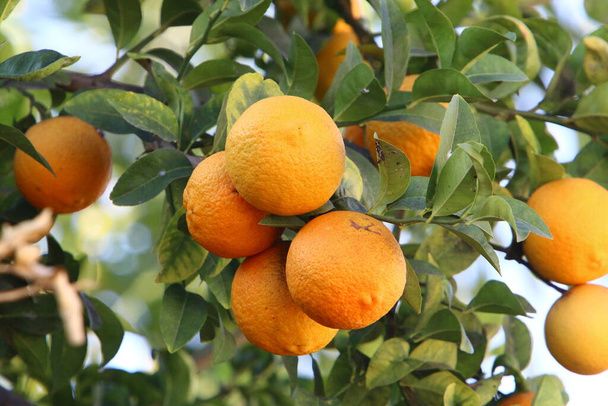
Oranges offer a sweet juicy pop of citrus flavor. Popular varieties include Navel, Valencia, Blood Orange, and Cara Cara. Navel oranges are perfect for eating fresh, with their signature “navel” at one end. Valencia oranges are ideal for juicing. Blood oranges have a striking dark red flesh and raspberry flavor notes. Cara Caras have a unique pink flesh and mild low-acid taste.[2]
Grapefruits bring a bold tart and bitter flavor. The two main types are white and red fleshed. White grapefruits are juicier and less sweet. Red grapefruits are sweeter with a richer color.[2] Overall, grapefruits add a touch of the exotic to any Mediterranean garden.
When selecting citrus trees, considering the flavor profiles and uses of each variety will help create a garden that meets your needs for beauty and fruit.
Citrus Tree Placement
Proper placement of citrus trees is crucial for their health and fruit production. Citrus trees thrive in full sun, so select a spot that gets at least 8 hours of direct sunlight daily. Southern exposures are ideal, especially if protected from cold winter winds.
Space citrus trees at least 10-15 feet apart to allow good air circulation and prevent crowding as they mature. Dwarf varieties can be planted closer at 6-10 feet apart. Make sure not to plant trees too close to structures which could block sunlight.
Citrus trees appreciate protection from strong winds which can damage branches or desiccate fruits. Consider constructing a windbreak using fences, hedges, or trellised vines on the north and west sides of the grove. This allows cooling summer breezes from the south and west to penetrate while blocking cold winter winds.
Always dig a wide planting hole for citrus trees, at least 2-3 times the width of the root ball. Backfill with a quality potting mix amended with compost. Make sure the graft union remains 2-4 inches above soil level when planting.
Other Mediterranean Plants
In addition to citrus trees, there are many other plants that evoke the Mediterranean and complement citrus beautifully in the garden. Some classic choices include:
- Lavender – With its iconic scent and purple blooms, lavender is a quintessential Mediterranean plant. There are many varieties to choose from, like English lavender or Spanish lavender. Plant lavender near paths or seating areas so you can enjoy its fragrance and blooms up close.
- Rosemary – An aromatic herb used frequently in Mediterranean cuisine, rosemary thrives in hot, dry conditions. Upright varieties like ‘Tuscan Blue’ make great informal hedges. Trailing kinds can cascade beautifully over walls or planters.
- Olive trees – No Mediterranean garden is complete without olive trees. Look for cold-hardy cultivars suitable for your climate. The silvery foliage and gnarled trunks of olive trees make them ideal sculptural elements. Plant them in well-drained soil and give them ample space.
- Sages – With their pungent, culinary foliage, sages like garden sage, pineapple sage, and Cleveland sage are ideal choices. Their spiky flowers attract pollinators too.
- Thyme – From creeping kinds to upright varieties, thymes offer pungent aroma along with flowers loved by bees. Use them as fragrant groundcovers or in Mediterranean-inspired cooking.
- Aeoniums – With fleshy rosettes of foliage ranging from chartreuse to burgundy, aeoniums add sculptural beauty as they cascade over walls and planters.
When planting lavender, rosemary, and other drought-tolerant Mediterranean plants, make sure to site them in full sun and very well-drained areas. Amending soil with grit or gravel can improve drainage. Group these plants with citrus to create attractive Mediterranean-style combinations. For example, plant rosemary and lavender around citrus trees. Or fill ceramic planters with a mix of aeoniums and herbs. With creativity and the right plant choices, you can bring the easy elegance of the Mediterranean right to your own backyard.
Hardscaping Elements
Hardscaping helps create the Mediterranean look and feel in a garden. The primary hardscaping elements used are:
Gravel
Gravel pathways, patios, and other hardscape surfaces are essential features of Mediterranean gardens. Gravel comes in a variety of earthy tones like beige, terracotta, and gray. The crunch of gravel underfoot immediately evokes the seaside gardens of the Mediterranean. Opt for pea gravel or crushed gravel that is comfortable for walking barefoot (Houzz). Leave space between pavers or stepping stones to allow planting succulents, herbs and other plants directly in the gravel.
Stone walls
Stone walls enclosing a space is a hallmark of Mediterranean gardens. Dry stone walls composed of local stone stacked without mortar create a timeless aesthetic. Low stone walls, planter walls, and retaining walls help delineate spaces and terraces while exuding rustic charm. Opt for natural, textured stone rather than precisely cut stones for an authentically rugged look (Garden Design).
Terra cotta
Terra cotta planters and other clay elements bring warmth and earthiness to a Mediterranean garden. Terra cotta pots planted with cascading flowers, herbs or citrus trees are characteristic. Water fountains, birdbaths and decorative accents in terracotta also enhance the style. Allow containers to age naturally for a suitably weathered patina characteristic of the Mediterranean (Homes & Gardens).
Tile
Decorative ceramic tile is used extensively in Mediterranean gardens, from pathways and patios to fountain accents and murals. Opt for natural terra cotta tones, intricate patterns, and glazed surfaces that glisten in the sun. Handmade artisan tiles imported from Italy, Spain and other Mediterranean countries add authentic flair. Use tile creatively on walls, floors, planters and steps (Garden Design).
Watering and Fertilization
Proper irrigation and fertilization are key to keeping citrus trees happy and productive. Citrus trees need consistent moisture, but not soggy soil. Drip irrigation or a soaker hose around the base of the tree delivers water slowly and directly to the roots. Water young trees 2-3 times per week and mature trees 1-2 times per week, adjusting for rainfall. Allow the soil to dry slightly between waterings.
Fertilize citrus trees 3 times per year – in early spring, early summer, and fall. Use a citrus fertilizer or a balanced 10-10-10 fertilizer. Follow label instructions for amount and application method. Fertilize young trees with 1/4 pound of fertilizer every few months, and mature trees with 1-2 pounds split over the 3 yearly applications (Source 1). Avoid fertilizing during winter dormancy.
Pruning and Maintenance
Proper pruning is essential for maintaining the health and fruit production of citrus trees. The ideal time to prune is in early spring or after the last frost, just before new growth emerges (How To Prune Your Citrus Trees). Remove any dead, diseased, or crossing branches first. Then thin inner branches to open up the canopy and allow light and airflow. According to the University of Arizona, you should also regularly remove sprouts and prune to shape young trees (Pruning Citrus).
Pest management is also key. Inspect trees regularly for common pests like aphids, mites, and scale. Use organic sprays like neem oil or insecticidal soap. You can also apply horticultural oils during dormancy. Exclude ants which may farm pests on trees. Promote beneficial insects like ladybugs and lacewings. Remove weeds and leaf litter which harbor pests.
Bringing Mediterranean Charm
The Mediterranean look is all about creating a relaxed, charming outdoor living space. Use decor and accents to evoke the colors, textures, and style of Southern Europe.
Add pops of color with bright blue planters and pots overflowing with flowers. Use terracotta, ceramic, and worn wood for authentic texture. Incorporate wrought iron or wood pergolas and arbors to provide shade. Decorate paved patios with ornate tile patterns. Hang string lights to illuminate garden gatherings at night. Display rustic wood tables and chairs for al fresco dining.
Select Mediterranean-style decor pieces like ceramic urns, concrete statuary, and wrought iron wall hooks. Accent with textiles like striped cushions, woven blankets, and vibrant tablecloths. Place fragrant herbs in pots along pathways or staircases. Include water features like tiered fountains for soothing background noise.
Most importantly, create intimate spaces meant for relaxing and connecting with nature. Curved pathways, secluded sitting areas, and spaces for outdoor cooking or dining all lend to the Mediterranean lifestyle. By bringing the colors, textures, and decor of Southern Europe to your backyard, you can create a lovely Mediterranean garden oasis.

